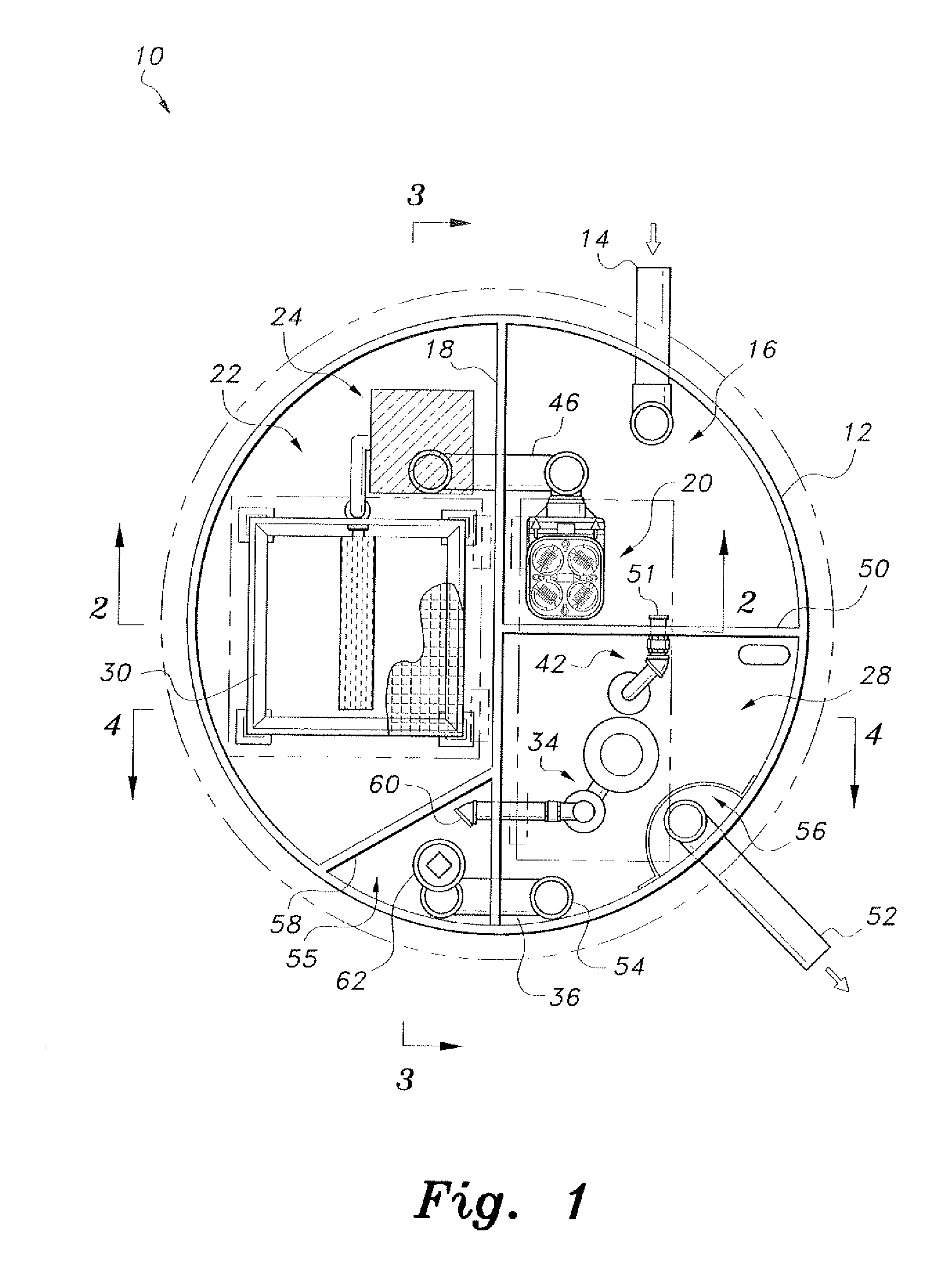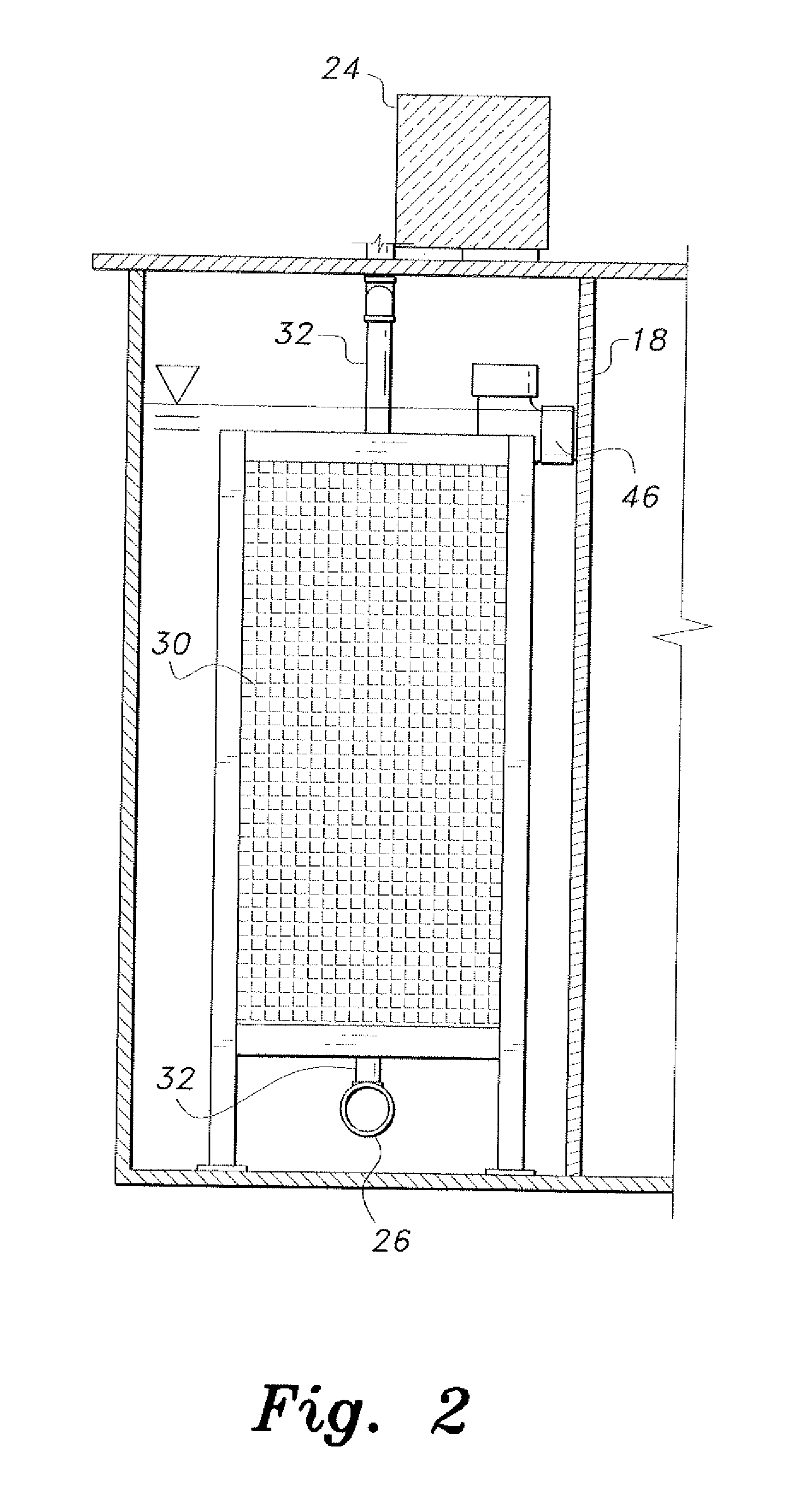The
discharge of untreated wastewater is not suitable, since it gives rise to numerous environmental concerns, such as the
pollution of surface and
groundwater resources.
Thus, when untreated wastewater is released into either aboveground bodies of water or subsurface drainfields, the level of dissolved
oxygen in the receiving waters begins to deplete, which endangers the water bodies themselves, along with the resident
plant and aquatic life.
However, there are several problems associated with large, centralized treatment plants.
Thus, if a centralized treatment
plant receives more wastewater on a particular day than what the
plant was designed to
handle, problems are encountered.
As noted above,
discharge of this untreated wastewater into bodies of water will endanger and kill resident plant and aquatic life in the water.
Untreated wastewater also contains a number of
disease pathogens that are extremely harmful to humans.
For example, untreated wastewater is one of the leading causes of
dysentery, which can be life threatening.
Thus, if a significant amount of untreated wastewater is discharged into a body of water, that body of water will become unavailable for human consumption.
On the other hand, if the treatment plant processes the larger-than-normal amounts of untreated wastewater, instead of diverting a portion into a body of water, the influx of untreated wastewater would wash away the
bacteria populations or
biomass used by the plant to treat the untreated wastewater, which would disrupt the entire biological treatment process of the plant.
Further, as noted above, wastewater treatment is particularly needed in developing nations, and such large-scale treatment plants may not be available.
In rural areas and in developing nations, construction of centralized wastewater treatment plants may be too expensive to build and maintain.
In addition, the cost of connecting residences and businesses in rural areas to a centralized treatment plant via
sewage lines may be impracticable due to the greater distance between the those residences and businesses.
However, since the wastewater leaving the
septic tank has only been minimally treated, the wastewater will be a detriment to the environment due to its organic and
nutrient contaminants, as noted above, and may not be recovered as
reclaimed water.
Furthermore, as solids build up inside the
septic tank, a phenomenon known as periodic upset may occur, causing solids to flow out of the
septic tank and into the field lines connected to the tank.
Eventually, these field lines will clog due to the buildup and carryover of solids.
When this occurs, the field lines have to be cleaned or replaced, if possible, which means destruction to a portion of the owner's property as well as increased expense to the owner.
A more extreme condition would be the failure of the drain field without an adequate replacement area on the property.
Further, it has been found that certain soils are only capable of receiving and dispersing a limited amount of wastewater, given the particular
soil structure, geology, and
groundwater conditions.
These materials have been utilized for decades, due to the
unavailability of other options.
Concrete and steel, due to their particular material properties, are highly subject to
corrosion and are not suited to withstand the corrosive gases and fluctuations in pH common in wastewater and wastewater treatment.
Further, both concrete and steel tanks are difficult and expensive to fabricate, transport and install.
Fiberglass, although a more tolerant material with a longer
life expectancy, is limited in its detailing capabilities and delaminates when subjected to a sharp pressure point or conditions of constant friction.
Fiberglass tanks are typically constructed utilizing pre-developed molds and are relatively inflexible in adjustment to specific project requirements.
This inflexibility results in additional required tankage,
yard piping and
mechanical equipment, thus resulting in increased maintenance and operational issues and expenses.
Additionally, steel, concrete and fiberglass tanks are all relatively difficult to repair when damaged.
However, the overall majority of these tanks are prone to crushing when emptied and are limited in size due to the pre-developed molds.
Molded plastic is used on a limited basis and in small volumes due to structural inadequacies in buried applications.
Steel and concrete systems have limited life expectancies due to the material makeup previously noted.
Fiberglass tanks are limited in their volumes due to pre-developed molds and are much more expensive on a first-cost basis.
Tanks formed from conventional materials are relatively heavy, thus making transportation difficult and expensive.
Further, present mobile
water storage tanks are subject to structural damage and severe temperatures.
This current standard is time intensive and typically involves numerous trades and materials.
The construction phase also opens the possibility of vandalism and theft, and the finished product is susceptible to natural disasters, such as hurricanes, tornados, earthquakes and the like.
Furthermore, mobile containerized
water treatment systems, while quickly mobilized, watertight and protected, are limited in treatment volumes by the container size.
 Login to View More
Login to View More 


